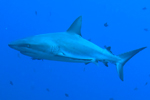A new analysis estimates that longline fisheries are still decimating seabirds, even after years of efforts to mitigate deaths. According to a study in Endangered Species Research around 300,000 seabirds are drowned by longline fisheries as bycatch. Attracted by bait on the longline—sometimes measuring hundreds of miles as it trails on the surface behind a boat—birds are often hooked and drowned.
“It is little wonder that so many of the affected seabird species are threatened with extinction – their slow rate of reproduction is simply incapable of compensating for losses on the scale this study has demonstrated,” Orea Anderson, with the Royal Society for the Protection of Birds (RSPB) and lead author of the study, said in a press release.
Single longline fleets are in some cases killing tens of thousands of seabirds every year, according to the study. Fifty thousand birds, mostly shearwaters and fulmars, are estimated to have been killed by the worst offender: the Spanish longline fleet on the Gran Sol. Second in line is the Japanese tuna fleet, which kills over 20,000 birds, many of them albatrosses. Currently over 75 percent of albatross species are threatened with extinction.
Even now researchers lack data on many fishing regions, which makes estimates difficult.
Regulations have proven effective in saving seabirds. Seabird mortality rates dropped 99 percent in South Georgia and 85 percent off of South Africa with enforced regulations. Bycatch of Hawaiian fleets has also been reduced substantially through enforcement of basic mitigation techniques.
“Using simple bird-scaring lines and weighting of hooks as they enter the water could dramatically reduce the number of seabirds being killed,” Cleo Small, co-author, said.
Related articles
Scientists follow rise of mercury pollution in seabird feathers
(04/18/2011) Analyzing the feathers of the black-footed albatross (Phoebastria nigripes) going back to 1880. researchers have uncovered rising levels of the toxic methylmercury in the endangered birds that is generally consistent with rising mercury emissions in the Pacific region. Methylmercury is a more toxic compound than mercury that binds with organic molecules when it is released through industrial processes, such as burning coal and other fossil fuels.
Left alive and wild, a single shark worth $1.9 million

(05/02/2011) For the Pacific island nation of Palau, sharks are worth much more alive than dead. A new study by the Australian Institute of Marine Science (AIMS) has found that one reef shark during its full life is worth $1.9 million to Palau in tourism revenue. Sold for consumption the shark is worth around $108. In this case a shark is worth a stunning 17,000 times more alive than dead.
Mitsubishi and Walmart agree to clean up fish sourcing practices
(03/09/2011) Two big players in seafood today announced that they are changing the way their fish are caught. Mitsubishi, which owns the UK’s most popular brand for tuna in a tin, Princes, and Walmart, which owns Asda, have agreed to stop buying from fishermen who use purse seines fishing in conjunction with fish aggregating devices (FADs) by 2014. These methods have been blamed in part for the vast overfishing of the world’s tuna and helping to decimate other species, such as sharks and rays, as bycatch.